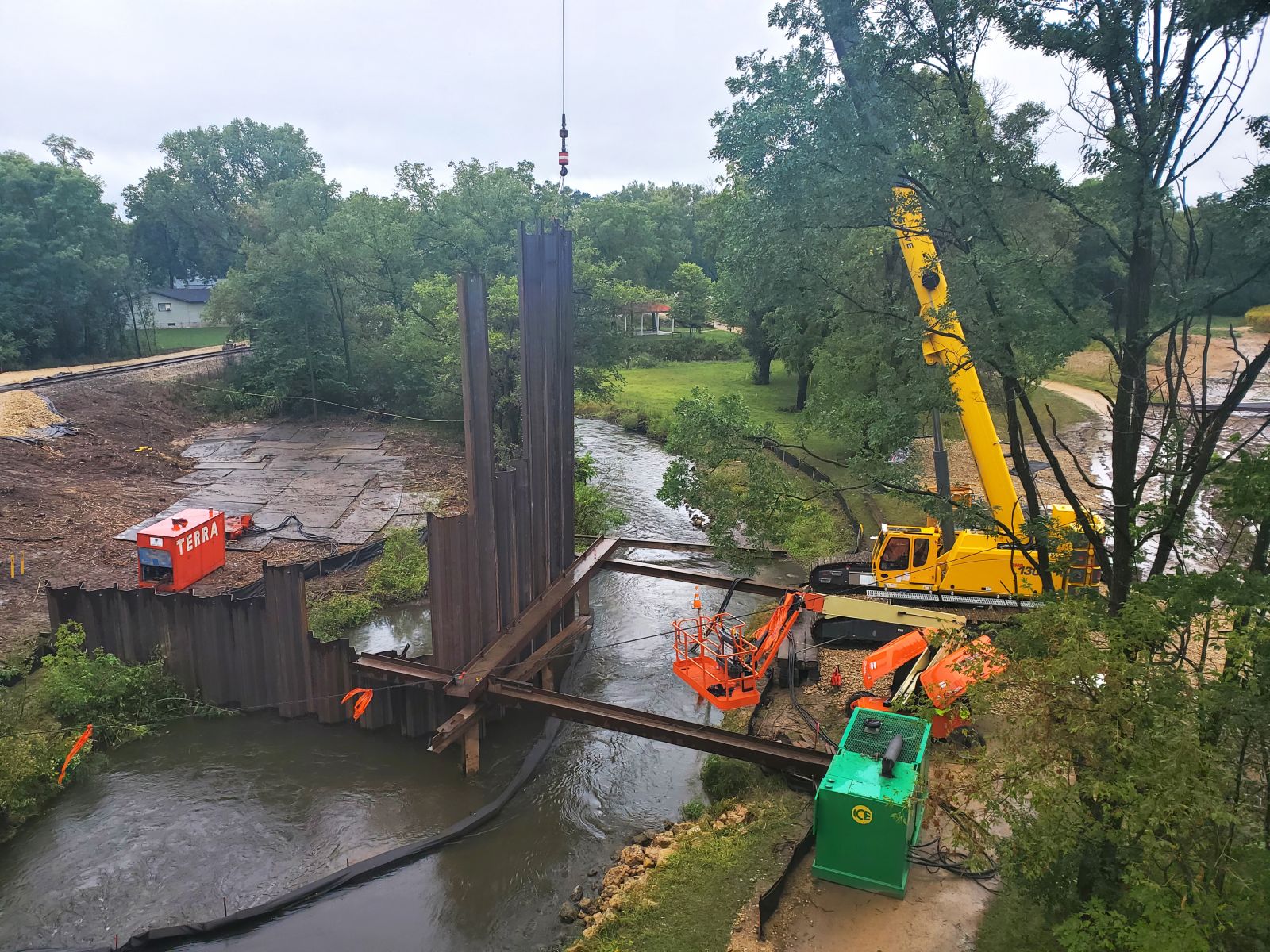Grove Teleboom Crawler Crane Helps Terra Tackle Ecologically Sensitive Job
 April 10, 2021 – A Grove GHC130 telescopic-boom crawler crane helped Wisconsin’s Terra Engineering & Construction meet the strict deadline for one of the company’s most recent and environmentally sensitive projects.
April 10, 2021 – A Grove GHC130 telescopic-boom crawler crane helped Wisconsin’s Terra Engineering & Construction meet the strict deadline for one of the company’s most recent and environmentally sensitive projects.
The project came up when flooding collapsed the bank of a trout stream in Mazomanie, Wisconsin, exposing a gas line and requiring that the line be replaced.
“The Department of Natural Resources presented us with a very tight timeline to do the work while causing the least amount of disturbance to the trout stream,” said Trevor Kauffeld, project manager/estimator at Terra. “This included installing sheet pile cofferdams in phases as the gas line was replaced and relaid through the stream bed.”
Kauffeld said that Terra wanted to use a crane that could handle a decent load at long reach. “That way, we could set up in one location and avoid the impact — and time penalty — of relocating the crane to the other side of the stream,” he said.
The suggestion to use a Grove GHC130 came from Milwaukee’s American State Equipment, the local Grove and Manitowoc dealer and rental fleet operator.
“We have found them to be not only a great source of equipment, but also of knowledge and a willingness to help,” Kauffeld said. “I gave them a description of what I needed to do, and they recommended this crane.”
Quick Build
A fully self-rigging crane that can be transported to the jobsite in three to five loads, the GHC130 features self-assembled, hydraulically installed counterweights, as well as frame-mounted jacks for track installation. That makes setup fast and simple. Its hydraulically extendable tracks give users a choice of three working stances for maximum stability and flexibility.
A maximum capacity of 132 USt and a full-power four-section main boom that can telescope from just over 41’ to just under 132’ while under load made the GHC130 ideal for this job.
Although the job routinely required picks of 10,000 to 15,000 lbs. at radii to 95’, it didn’t push the crane to its limits.
If additional reach had been required, the standard 26’3” offsetable swing-away lattice extension could provide a tip height of 167’4”. For even more reach, using two 18’4” lattice inserts, a 2’8” boom head, and 23’ fly extension would give up to 229’8”.
“The boom and capacity were what we were really looking for with this job, but the cabin comfort was a real bonus for the operator,” Kauffeld added. “Its 20° of tilt made controlling the long-reach operations much easier.”
In addition to comfort features, such as climate control and air-suspended heated seat, the cab makes the operator’s job easier with load-sensing, dual-axis joystick controls. Visibility is enhanced with a color monitor that displays images from up to four exterior cameras, and a graphical RCL (Rated Capacity Limiter) for load moment with advanced crane performance optimization and diagnostics.
Things at the trout stream have pretty much returned to normal, despite having had a crane on its bank for 3.5 weeks.
“Thanks to the GHC130, we completed the job well within schedule, and with minimal environmental impact,” Kauffeld said. “But I wouldn’t have expected any different — I’ve been using Grove cranes for almost 20 years. They have always held up well, with minimal downtime.”
Terra was incorporated in 1972, and now provides critical interaction between project designers, architects, structural engineers, and geotechnical engineers from its offices in Madison and Pewaukee, Wisconsin.

